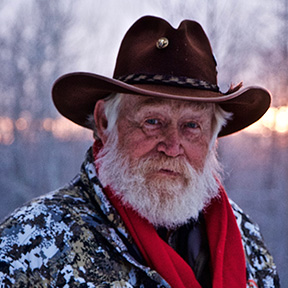Mistakes Predator Callers Make, and How to Prevent Them
No sooner had I begun blowing my Burnham Brothers jackrabbit in a distress call than a coyote charged out of the underbrush heading directly toward me. I jerked my father’s Model 94 .30-30 lever action to my shoulder, pointed it in the general direction of the fast-coming coyote, and wildly fired all seven rounds. The coyote left unscathed.
A few moments later, hunting knife in right hand (just in case the “wolf” decided to attack) and my empty rifle in my left hand, I retreated home, anxious to tell my story to all who would listen.
As a ten-year-old, I made numerous mistakes calling in that first coyote. Foremost in my mind at the time was not taking a shotgun loaded with Number 4 buckshot or carrying extra ammo. But that was only part of it.
I have learned a lot since that initial calling experience
A frequent is setting up to call from a place that gives predators the upper hand by not paying attention to the wind. Do not set up with the wind blowing from you to where you expect coyotes, bobcats, or foxes to approach from. Predators live by their noses. Regardless of where they initially come from, they almost always circle to approach the distress sounds from downwind. Set up where you have shooting lanes to the left and right of directly downwind.
Some predator callers do not call steadily, consistently, and continually. Remember: you are not trying to call turkeys or ducks! Once you start, keep calling for at least ten minutes. If you do not call continually, some predators may lose interest in responding. This is easy with an electronic call, not so easy with a mouth-blown I tend to use.
Shooting sticks, whether commercial models or self-made, minimize your movement and allow you to shoot more accurately. A decoy, set up in front of the shooter, keeps incoming predators concentrating on it rather than the caller. Simply a feather tied on a string and dangling from a limb works well.
A common mistake among predator hunters is rushing the shot, as I did on my first called-in coyote. Be patient and let predators come close for higher percentage shots. Then, take your time and be certain you are on target. Do not just simply shoot in the direction of the predator!
Be precise in shot placement. It’s one of the reasons I love using Trijicon’s AccuPoint scopes, with their green dot. Waiting and not shooting immediately when you first see a responding coyote may also result in multiple animals responding. It is not uncommon for two or more coyotes to respond at one time.
Once you start, keep calling for at least ten minutes.
I love hunting predators with the same rifles I use on big game, shooting Hornady ammo. Again, the same bullet load I use when hunting big game. To me, any rifle chambered in .22 and beyond is a good predator round. But again, I like using my big game hunting rifles. Occasionally, when calling where predators may be close when they respond and become visible, I use a 12-gauge shotgun loaded with Hornady’s BB Heavy Magnum.
The calls I use are by Burnham Brothers, their mouth-blown calls, and their new ultra-sonic electronic call, which is many times more advanced in creating sound than any other such call. I have had more success with these calls than any others.
Before starting to call, I also spray the area with Predator Death Grip from TRHP Outdoors. This product will definitely help not only in calling in predators but also in holding them in the area, allowing more shot opportunities.
It is also important to not get frustrated if predators do not immediately respond or do not respond at every stand. You might call in one or more predators at every stand, but that is not the norm. Personal experience, and those of other serious predator hunters, suggest you generally call in a predator one out of every eight stands. If you have one of those days when nothing responds, do not lose faith or give up. Sooner or later, a predator will respond to your efforts.
To learn more, simply go hunting.
Professional wildlife biologist/outdoor communicator, Larry Weishuhn, known to many as “Mr. Whitetail”, has established quality wildlife management programs on over 12,000,000 acres throughout North American and other parts of the world. He has hunted big game with rifle and/or handgun on six continents. Larry is a Professional Member of the Boone & Crockett Club, life-member of numerous wildlife conservation organizations including the Dallas Safari Club, Mule Deer Foundation, and Wild Sheep Foundation. He currently serves on the DSC Foundation Board of Directors, is one of three co-founders of the Texas Wildlife Association; is a member of the Legends of the Outdoors Hall of Fame and the Muy Grande Hall of Fame; he too, received the Zeiss Lifetime Achievement Award among many other honors.




